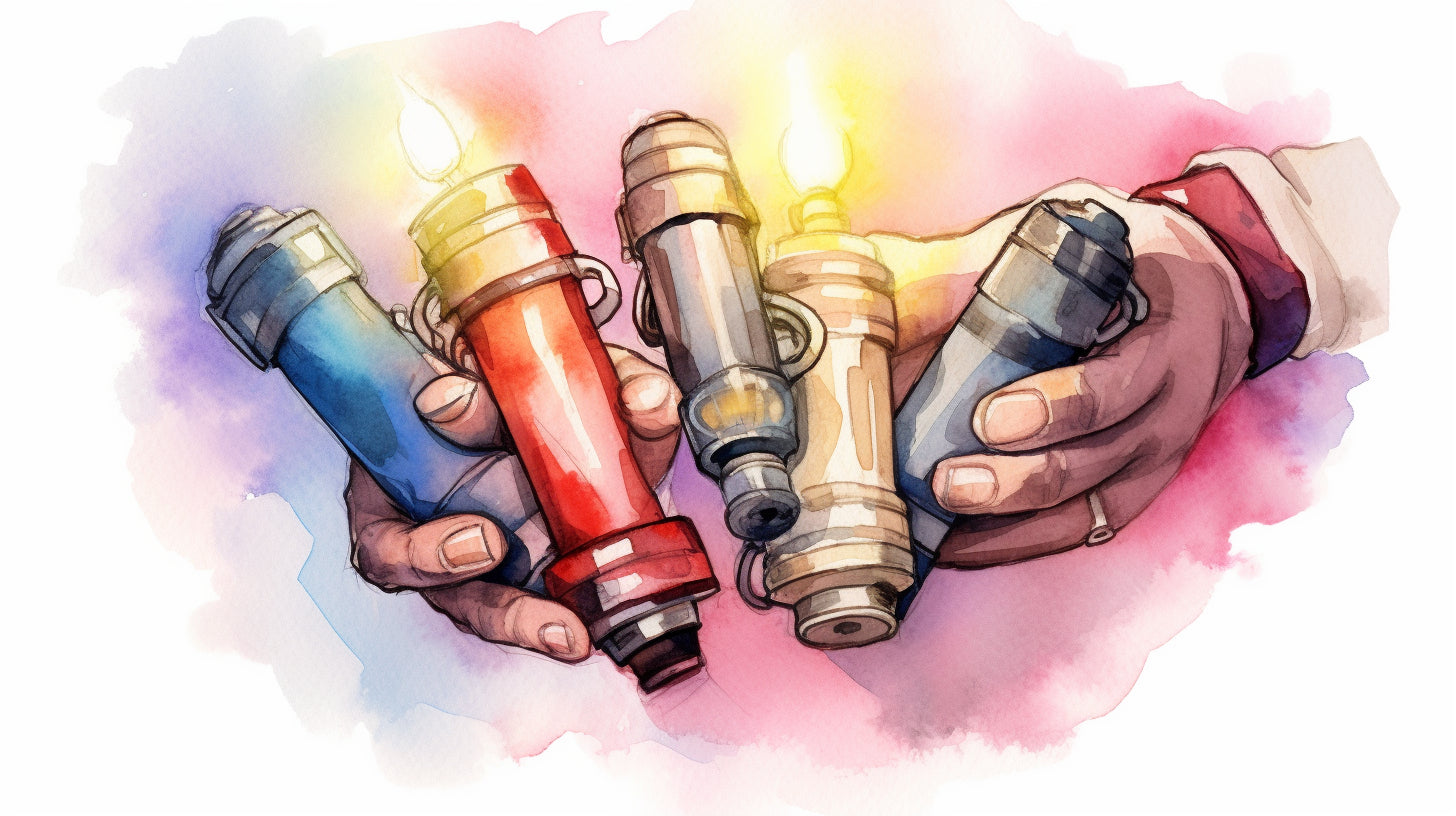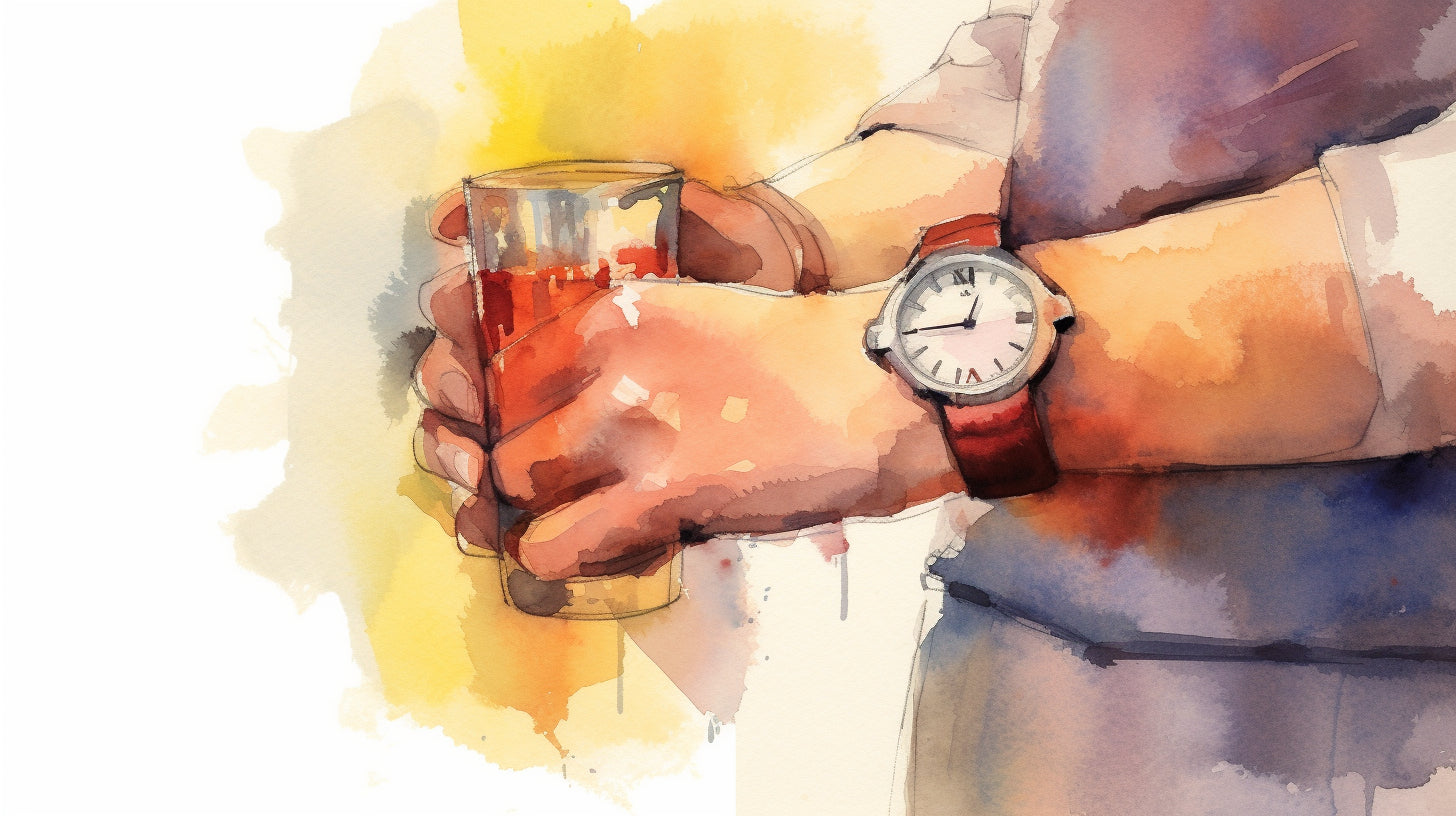Welcome, my friend, to this informative guide on personal safety devices for crisis situations. In times of emergency, it's crucial to prioritize our well-being and take proactive measures to protect ourselves. Whether you find yourself in a natural disaster, a dangerous situation, or simply want to feel more secure in your daily routine, personal safety devices can be valuable tools to have by your side.
When faced with unexpected events, it's natural for us to feel scared and overwhelmed. However, being prepared and equipped with the right safety tools can make all the difference in ensuring our personal safety. In this article, we will explore the importance of personal safety devices and highlight some essential ones that you should consider having on hand. So, let's dive in and arm ourselves with knowledge and confidence!
Table of Contents:
- Importance of Personal Safety Devices
- Essential Personal Safety Devices
- Additional Safety Measures
- Choosing the Right Personal Safety Device
- Training and Familiarization
- Stay Informed and Practice Preparedness
- Conclusion
Importance of Personal Safety Devices
In crisis situations, personal safety should always be a top priority. Whether you find yourself in a natural disaster, facing an intruder, or even encountering a wild animal, having the right personal safety devices can make a world of difference. These devices are specifically designed to help you protect yourself and increase your chances of getting out of a dangerous situation unharmed.
Ensuring Personal Safety in Crisis Situations
When faced with an emergency, time is of the essence, and having the right tools can be crucial in ensuring your personal safety. Personal safety devices provide a sense of security and can help you take immediate action when faced with a threat. Here are some reasons why these devices are important:
- Deterrence: The presence of a personal safety device can act as a deterrent, making potential attackers think twice before targeting you. Most criminals are opportunistic and will look for easy targets. Safety devices send a message that you are prepared and willing to defend yourself.
- Alerting Others: In an emergency, attracting attention is vital. Personal safety devices such as alarms and whistles are designed to produce loud and piercing sounds that can quickly grab the attention of people nearby. By alerting others to your situation, you increase the chances of getting help.
- Buy Time: Personal safety devices buy you precious seconds, which could be the difference between escape and danger. Devices like pepper spray or mace can temporarily incapacitate an attacker, giving you the opportunity to escape or seek help.
Benefits of Having the Right Safety Tools
Investing in personal safety devices can have many benefits. Here are a few advantages of carrying the right safety tools:
- Peace of Mind: Knowing that you have the tools to protect yourself can give you peace of mind in your daily life. This sense of security can help you feel more confident and empowered, allowing you to navigate your surroundings with greater ease.
- Increased Confidence: Carrying personal safety devices can boost your confidence and empower you to face potentially dangerous situations head-on. Knowing that you are prepared can make you less vulnerable and more assertive.
- Flexibility: Personal safety devices come in various forms and sizes, allowing you to choose one that fits your lifestyle. Whether it's a discreet personal alarm or a compact self-defense keychain, these devices can easily be incorporated into your daily routine.
Remember, personal safety devices are not a guarantee of safety, but they can significantly improve your chances of staying safe in crisis situations. By having these tools at your disposal, you are taking an active role in your own personal safety.
In the next section, we will explore some essential personal safety devices that you should consider having in your emergency preparedness kit.
Essential Personal Safety Devices
In times of emergency or crisis situations, having the right personal safety devices can make a significant difference in ensuring your well-being. These devices are designed to help you defend yourself, seek assistance, and stay safe when faced with potential threats. Whether you're walking alone at night, traveling to unfamiliar places, or simply want to feel more secure in your daily life, having these essential personal safety devices can provide you with peace of mind and added protection.
Emergency Whistle
An emergency whistle is a small, compact device that can emit a loud and distinct sound. It is an effective tool for attracting attention and notifying others of your location in an emergency. The high-pitched sound can carry over long distances and can be easily heard even in noisy and crowded environments. Having an emergency whistle on hand can be incredibly helpful in situations where you may be trapped or in need of immediate assistance.
Personal Alarm
A personal alarm is another vital device for personal safety. It is a small device that emits a loud, piercing noise when activated. Personal alarms are often disguised as keychains or wearable accessories, making them discreet and easy to carry wherever you go. When faced with danger or feeling threatened, activating the personal alarm can startle and deter potential attackers, drawing attention to your situation and potentially scaring them away.
Pepper Spray or Mace
Pepper spray or mace is a non-lethal self-defense tool that incapacitates attackers by causing temporary blindness, difficulty breathing, and intense burning sensations. It is a popular personal safety device that can be easily carried in a small canister or attached to a keychain. Pepper spray is legal in most places and can provide you with a powerful means of defending yourself in close encounters.
Tactical Flashlight
A tactical flashlight is more than just a regular flashlight. It is specifically designed for personal safety and self-defense purposes. These flashlights are incredibly bright and often come with additional features like strobe lights or a built-in strike bezel. The bright light can disorient potential attackers, allowing you to escape or call for help. The strike bezel can be used as a weapon if necessary.
Self-Defense Keychain
A self-defense keychain is a small, compact device that can be attached to your keys or carried in your pocket. It usually features a sharp point or a hardened edge that can be used to strike an assailant in self-defense. These keychains are discreet and can be easily accessed when needed. While they may not be as effective as other personal safety devices, they can provide you with an additional level of protection in emergency situations.
Having these essential personal safety devices can greatly enhance your personal security and increase your chances of staying safe in crisis situations. However, it is important to note that these devices should always be used responsibly and in accordance with the law. Be sure to check local regulations regarding the carrying and usage of personal safety devices.
Remember, personal safety is a priority, and being prepared with the right tools can make all the difference. Stay vigilant, stay informed, and prioritize your well-being.
Additional Safety Measures
When it comes to emergency preparedness, personal safety devices are crucial. These devices can provide an extra layer of protection and help you feel secure in crisis situations. While there are many personal safety devices available on the market, it's important to choose the ones that best suit your needs. In addition to the essential safety devices, there are also some additional measures you can take to further enhance your safety.
First Aid Kit
In any emergency situation, having a first aid kit is essential. A well-stocked first aid kit can help you address minor injuries and provide basic medical care until help arrives. It should include items such as bandages, antiseptic wipes, adhesive tape, pain relievers, and scissors. Make sure to regularly check and replenish your first aid kit to ensure that all items are up-to-date and in good condition.
Emergency Communication Device
During a crisis, it's crucial to stay connected with loved ones and emergency services. An emergency communication device, such as a mobile phone or a two-way radio, can help you stay in touch and call for help if needed. Make sure your device is fully charged and keep it within reach at all times. Additionally, consider having a backup power source, such as a power bank, to ensure that you can still use your device even if there is a power outage.
GPS Tracker
In certain situations, it may be helpful to have a GPS tracker. A GPS tracker can help track your location and provide your whereabouts to emergency services or loved ones. This can be particularly useful if you are in a remote area or if you are traveling alone. There are various types of GPS trackers available, including wearable devices and smartphone apps. Research and choose a GPS tracker that is reliable and suits your needs.
Remember, personal safety devices are meant to enhance your safety, but they are not a guarantee of complete protection. It's important to be proactive and take other precautionary measures to ensure your safety in all situations. Here are some tips to consider when choosing and using personal safety devices:
- Consider Your Daily Routine and Environment: Think about the places you frequent and the activities you engage in on a regular basis. Choose safety devices that are appropriate for your lifestyle and the environments you find yourself in.
- Effectiveness and Ease of Use: Look for personal safety devices that are easy to use and provide effective protection. Read reviews and testimonials to get an idea of how reliable and efficient a particular device is.
- Legal Considerations and Local Regulations: It's important to be aware of the laws and regulations governing the use of personal safety devices in your area. Make sure the devices you choose are legal and permitted in your location.
Stay Safe and Prepared
In conclusion, personal safety devices are crucial in crisis situations. In addition to the essential devices, such as an emergency whistle, personal alarm, pepper spray or mace, tactical flashlight, and self-defense keychain, there are additional safety measures you can take, such as having a first aid kit, an emergency communication device, and a GPS tracker. When choosing the right personal safety device, consider your daily routine, the device's effectiveness and ease of use, and any legal considerations or local regulations. Finally, remember to stay informed, practice preparedness, and always prioritize your safety. Stay safe!
Choosing the Right Personal Safety Device
When it comes to personal safety, having the right device can make all the difference in a crisis situation. With so many options available in the market, it can be overwhelming to choose the right one for your needs. In this section, we will discuss some factors to consider when choosing the right personal safety device.
Consider Your Daily Routine and Environment
One of the first things to consider when choosing a personal safety device is your daily routine and environment. Different devices are suited for different situations. Here are some questions to ask yourself:
- Do you spend a lot of time walking or commuting alone, especially at night?
- Are you often in crowded areas where you might feel vulnerable?
- Do you live or work in a high-crime area?
By identifying your specific needs and assessing the risks in your daily life, you can choose a device that is most suitable for your situation.
Effectiveness and Ease of Use
Another important factor to consider is the effectiveness and ease of use of the device. In a crisis situation, you need a device that is easy to access and operate quickly. Some things to consider:
- Is the device easy to carry and access when needed?
- Does it have a simple operation, such as a one-touch activation or a pull-pin mechanism?
- Will the device be effective in deterring or incapacitating an attacker?
It's essential to choose a device that you feel comfortable using and that will effectively serve its purpose in keeping you safe.
Legal Considerations and Local Regulations
Before purchasing a personal safety device, it's crucial to be aware of any legal considerations or local regulations regarding their use. Some devices may be restricted or prohibited in certain areas. It's important to check your local laws to ensure you are within compliance.
For example, certain places may have restrictions on the size, type, or content of pepper spray or mace. Some areas may require permits or licenses for certain self-defense devices. By being informed about local regulations, you can make a decision that adheres to the law while still providing you with the protection you need.
As you consider the factors mentioned above, it's important to do thorough research and read reviews to find the personal safety device that best fits your needs. Remember, your safety is a top priority, so choose a device that gives you confidence and peace of mind.
"Choosing a personal safety device is a personal decision. What works for one person may not work for another. It's crucial to find a device that matches your lifestyle, environment, and personal preferences."
Training and Familiarization
When it comes to personal safety devices, it's not enough to simply own them. In order to fully utilize their potential and ensure your safety in crisis situations, it is crucial to undergo training and familiarization. Knowing how to properly use and handle your personal safety devices can make all the difference when faced with an emergency. In this section, we will explore the importance of training and familiarization and provide tips on how to maximize the effectiveness of your personal safety devices.
Proper Usage and Handling
Personal safety devices, such as pepper spray, tactical flashlights, or self-defense keychains, can be powerful tools in protecting yourself. However, it is important to know how to use them correctly in a high-stress situation. Here are some tips for proper usage and handling:
- Read the Instructions: Take the time to thoroughly read and understand the user manual or instructions that come with your personal safety device. Familiarize yourself with the different features and functions, as well as any safety precautions.
- Practice Makes Perfect: It is highly recommended to practice using your personal safety device in a safe and controlled environment. This can help build muscle memory and ensure that you are comfortable and confident with its operation.
- Regular Maintenance: Make sure to regularly check and maintain your personal safety devices. Replace batteries if necessary, clean and lubricate mechanical parts, and ensure that they are always in good working condition.
- Accessibility and Retrieval: In an emergency, every second counts. Make sure your personal safety devices are easily accessible, whether it's on your keychain, belt, or in a bag. Practice retrieving them quickly and efficiently, even in low-light conditions.
Self-Defense Training
While having personal safety devices can provide an added layer of protection, it is important to remember that they are just tools. Your knowledge and training are what truly empower you to stay safe. Consider the following self-defense training options:
- Self-Defense Classes: Look for local self-defense or martial arts classes that focus on personal safety and self-defense techniques. These classes can teach you practical skills such as situational awareness, basic strikes and blocks, and how to effectively use your personal safety devices.
- Online Resources: There are numerous online resources available that provide instructional videos and guides on self-defense techniques. While it is always recommended to have hands-on training, these resources can offer valuable knowledge and tips.
- Role Playing Scenarios: Practice various scenarios with a partner or instructor to simulate real-life situations. This helps improve your decision-making skills, reflexes, and overall preparedness in different crisis situations.
Remember that training and familiarization go hand in hand with personal safety devices. By regularly practicing and staying informed, you can maximize the effectiveness of your devices and respond efficiently in emergency situations.
"Training is essential to ensure that you can use your personal safety device effectively. Familiarizing yourself with its functions and practicing proper usage can be the difference between feeling empowered and feeling helpless."
Stay Informed and Practice Preparedness
Preparing for emergency situations involves more than just having the right personal safety devices. It's crucial to stay informed and practice preparedness regularly to ensure that you can effectively handle crisis situations. Here are some key steps you can take to stay informed and be prepared:
Preparing an Emergency Plan
Creating an emergency plan is essential to ensure everyone in your household knows what to do in case of an emergency. Here are some important considerations when developing your plan:
- Identify potential risks: Assess the types of emergencies that could occur in your area, such as natural disasters or civil unrest.
- Establish communication: Determine a communication plan for contacting family members during an emergency. Designate a meeting place if you are unable to reach each other.
- Gather important documents: Prepare copies of essential documents, including identification, insurance policies, and medical records. Keep these in a safe place or store them digitally.
- Prepare an emergency kit: Assemble a well-stocked emergency kit that includes food, water, medications, and other necessary supplies to sustain your household for at least 72 hours.
- Know evacuation routes: Familiarize yourself with evacuation routes in your area. Plan alternative routes in case primary ones are inaccessible.
Regular Safety Drills
Regularly practicing safety drills can help ensure that everyone in your household knows how to respond quickly and efficiently in an emergency. Here's how to incorporate drills into your preparedness routine:
- Fire drills: Conduct fire drills to practice evacuation procedures. Ensure that everyone knows how to safely exit the building and where to meet outside.
- Severe weather drills: In areas prone to severe weather, practice drills for seeking shelter. Identify the safest areas in your home and practice taking cover.
- First aid training: Learn basic first aid techniques and regularly refresh your knowledge. Knowing how to administer first aid can be invaluable in emergency situations.
- Practice using safety devices: Train yourself and your family members on how to effectively use personal safety devices like whistles, alarms, and pepper spray. Regular practice will help build confidence and ensure proper usage.
Remember, preparedness is an ongoing process. Stay informed about emergency protocols and updates in your community. Monitor local news sources and subscribe to emergency alert systems to receive timely information. By staying informed and practicing preparedness, you can better protect yourself and your loved ones in crisis situations.
By following these steps and having the right personal safety devices, you'll be well-equipped to handle emergency situations and enhance your personal safety. Stay informed, stay prepared, and stay safe!
Conclusion
In conclusion, personal safety devices are essential tools that can significantly enhance your safety and security in crisis situations. By ensuring you have the right devices and familiarizing yourself with their usage, you can feel more confident in your ability to protect yourself and your loved ones. Here are a few key takeaways:
- Personal safety devices such as emergency whistles, personal alarms, pepper spray or mace, tactical flashlights, and self-defense keychains can provide an added layer of protection and deter potential threats.
- Additional safety measures such as first aid kits, emergency communication devices, and GPS trackers can further enhance your preparedness and aid in emergency situations.
- When choosing the right personal safety device, consider factors such as your daily routine and environment, the device's effectiveness and ease of use, and any legal considerations or local regulations.
- It's important to undergo proper training and familiarization with your personal safety devices to ensure you can use them effectively when needed. Consider taking self-defense training courses to further enhance your skills and confidence.
- Stay informed about emergency preparedness and regularly practice safety drills to ensure you and your loved ones are well-prepared for any crisis situation.
Remember, personal safety is a priority, and investing in the right tools and knowledge can make a significant difference in your overall well-being. By being proactive, knowledgeable, and prepared, you can face emergencies with more confidence and increase your chances of staying safe. Stay vigilant and take the necessary steps to protect yourself and your loved ones. Stay safe!
Frequently Asked Questions
-
What are the top personal safety devices for crisis situations?
The top personal safety devices for crisis situations include: 1. Personal alarm keychains, 2. Pepper spray or mace, 3. Tasers or stun guns, 4. Emergency whistles, and 5. Safety apps for smartphones.
-
Do personal safety devices provide effective protection during crisis situations?
While personal safety devices can enhance your personal security during crisis situations, it's important to remember that they are tools to assist you and should be used in conjunction with other safety measures. They can help deter potential attackers or signal for help in emergencies.
-
How do personal alarm keychains work?
Personal alarm keychains emit loud and piercing sounds when activated. They are designed to startle an attacker and draw attention to the situation, potentially scaring them off or alerting others nearby.
-
Are personal safety devices legal to carry?
Laws regarding personal safety devices vary depending on the country and state you reside in. It is important to research and understand the legal regulations in your area before purchasing and carrying any personal safety devices.
-
Are there any smartphone apps for personal safety?
Yes, there are several smartphone apps available that can help enhance personal safety. These apps often have features such as emergency contacts, location sharing, SOS alerts, and sound alarms, providing immediate access to assistance during crisis situations.




















Leave a comment
This site is protected by hCaptcha and the hCaptcha Privacy Policy and Terms of Service apply.